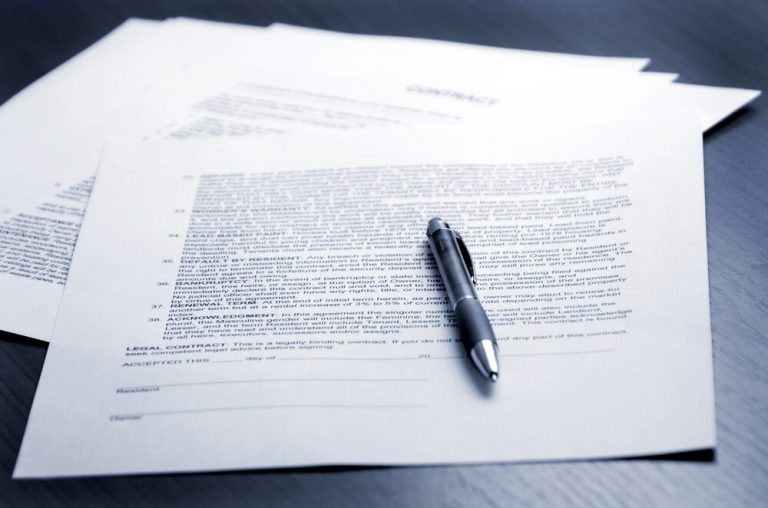
Article written by Rosemary Bocska
Under Canadian law, getting a divorce is a formal legal process: It involves following specified procedures, filling out certain forms, and taking specific legal steps. Only once these are all completed can you and your ex-spouse be considered formally divorced.
Divorce Eligibility
Before you can begin the legal process, you and your ex must be eligible to apply. In law, the prerequisite for obtaining a divorce is that there must have been a breakdown of your marriage. This can be proven in three possible ways:
- A separation (with no fault attributed), meaning you and your ex have been separated from each other for at least one full year.
- Adultery. This requires your ex to prove that you have committed adultery since your wedding.
- Cruelty. This requires your ex to prove that since your wedding, you have treated him or her with “physical or mental cruelty of such a kind as to render intolerable” your continued cohabitation.

Filing with the Right Court
The next step is to determine the proper Court in which to file for your divorce. That will depend on the broader nature of your dispute, and your location, but generally you must file in the municipality in which you or your ex live. One exception is where you and your ex have a child together and you are asking the Court to grant you custody or access of that child. In that case, you must start the proceeding in the municipality where your child lives.
The Family Law Rules also provide some added stipulations around where to start a case, that my apply to your specific situation.
Following Court Procedure
Under Ontario law, the first step in your divorce will be to file an “Application” with the Court. It contains the formal, written statements that describe your legal claim and position, including:
- The issues you and your ex-spouse need to have resolved; and
- The specific remedies that you each want to have embodied in a Court Order.
The contents and nature of the Court Order you hope to obtain will naturally depend on the scope of the dispute between you, and the nature of the proceeding. For example, you may be asking the Court for a Divorce Order, but you may also be asking for corollary relief relating to spousal or child support, or both.
Naturally, your ex will also be required to file his or her responding materials, setting out his or her legal claims and position, and the contents of the requested Court Order.
If you are the person taking the initial step in your divorce, then you are referred to as the “Applicant”, while your ex is referred to as the “Respondent.”
What Type of Application?
In Ontario, there are essentially three kinds of Applications that may govern your situation:
- Form 8A: Simple Application. This form is the one to use if you are making a claim for divorce only. No other claims can be contained in this type of Application.
- Form 8A: Joint Application. This form is used in situations where you and your ex spouse agree on all the claims you have against each other (including divorce, child custody/access, and spousal support).
- Form 8: General Application. This is the form designed for whenever there are contentious issues between you and your ex-spouse.
Your Application for a divorce must fully define the basis on which you are seeking to assert your various legal rights in relation to your ex. This document defines – and often limits – the remedies you will be entitled to pursue.
For this reason, it is highly recommended that you enlist the help of a family lawyer to assist you with this task.
Due Process Requirements
Even though every divorce Application will be different, all are guided by established procedural principles. Foremost among them is the notion that opposing parties in litigation are entitled to receive and respond to each other’s materials, requests made to the Court, evidence tendered, etc.
This means that anything you file with the Court in support of your position must also be provided to your ex-spouse in a format, and on a timeline, specified by the Family Law Rules. Likewise, your ex is under an identical obligation toward you.
This way, you are each fully aware of any issues that may exist between you, and you also know in detail the case your ex-spouse is presenting in support of his or her position.
The Continuing Record
Every document that you or your ex-spouse submit to the Court is included in what is called the “Continuing Record.” This is essentially a compendium of litigation-related documents and related materials that pertain to your Family Law matter, including the pleadings (i.e. the Application), and responding materials from your ex, copies of any documents that you served on him or her, supporting materials, etc.

There are specific formatting requirements for the Continuing Record, including a specific form of cover page. It must also include a Table of Contents which must be updated any time a new document is added.
Although the Continuing Record is kept by the Court, it is a good idea to keep and organize your own copies of all the materials that pertain to your litigation, for easy reference.
Financial Steps
Finally, you should start some financial record-keeping. There is no “right way” to do this, but whatever the approach, your objective is to start organizing the financial information that will be an integral part of your upcoming divorce proceedings. Here are some recommended steps to take:
- Organize your finances. What assets, funds and investments do you own, as a (now-former) couple? What assets do you own individually? What debts and liabilities do you have, both collectively as a couple, and separately? Make a list of all these items by category.
- Collect important documents. Set aside your tax returns for at least the past three years. Make a detailed list of all your accounts, and the financial institutions at which they are held, together with documentation relating to your bank accounts (both jointly-held, and separate), credit cards, loans, investments, real estate holdings, insurance policies, pay stubs and employment benefits. Also list your RRSPs, RESPs and Tax-Free Savings Accounts (TFSAs), pension information, and CPP.
- Identify your debts and liabilities. These relate to both your own individual debts, the debts of your ex-spouse, and those that you share. Typically, these might include any lines of credit, credit card debts, mortgage debt, car loans, and student loans.
- Assemble Information on Expenses. You will also need to collect information and documents to establish the ongoing household expenses that you and your ex incurred on a regular basis during the pre-separation phase, especially if they are the type that will continue in the post-separation phase as well.
It’s always a good idea to seek professional assistance for this stage of the divorce process, including an accountant or financial advisor, and a lawyer. Having these professionals on your side will minimize stress, confusion and ultimately cost.
%201.png?)
